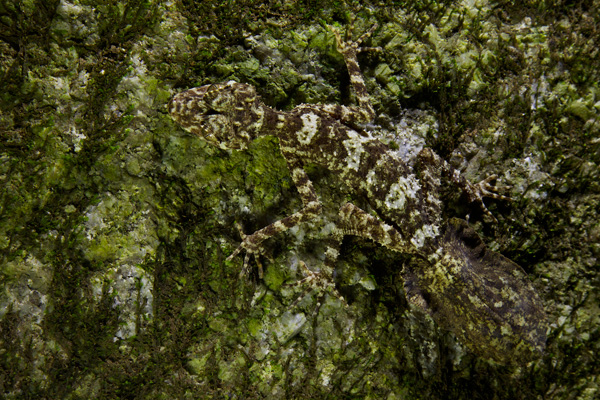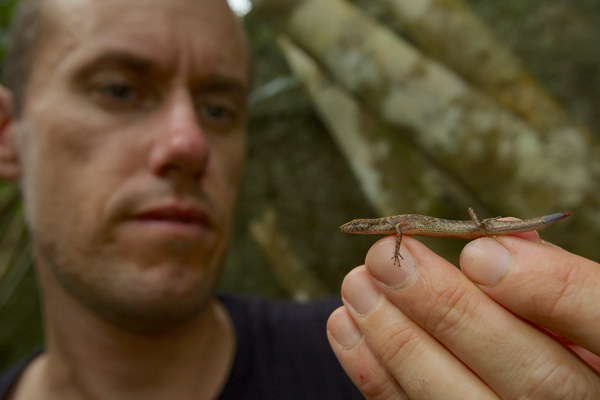Last March, several scientists from James Cook University and a National Geographic/Harvard University photographer surveyed the remote peninsula of Cape Melville in north eastern Australia. It was the first time scientists had explored the area. Within days they had discovered three vertebrates completely new to science: a gecko, a skink and a frog.
To find three completely new and distinct vertebrates is very surprising, especially in an area that has been explored as much as Australia has.
These three animals are all unique to Cape Melville and have developed traits to help them live among the boulders.
The Cape Melville Leaf-tailed Gecko received the scientific name Saltuarius eximius meaning “exceptional” or “extraordinary” to describe its ability to camouflage.

The other lizard discovered, the Cape Melville Shade Skink (Saproscincus saltus), is extremely small and active.
The Blotched Boulder-frog has the scientific name Cophixalus petrophilus meaning “rock-loving.”


During the rainy season, the Blotched Boulder-frog comes out from under the boulders to mate.
The males guard the eggs, which are laid in moist rock cracks.
For more pictures and information: New to science: 2 lizards, 1 frog discovered on Australian expedition (pictures)